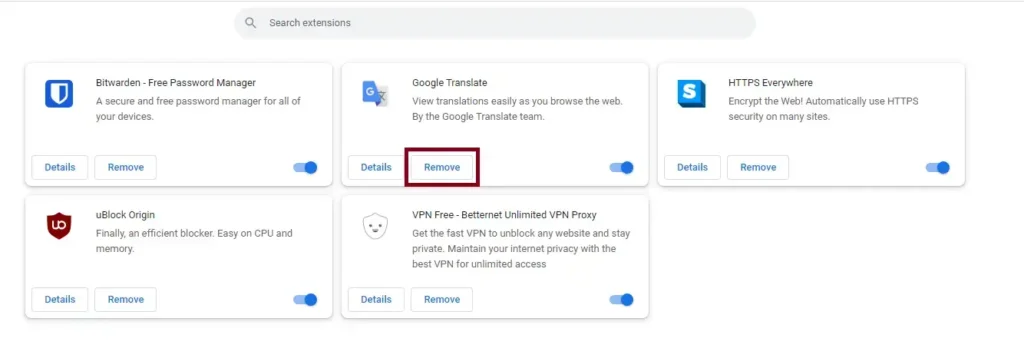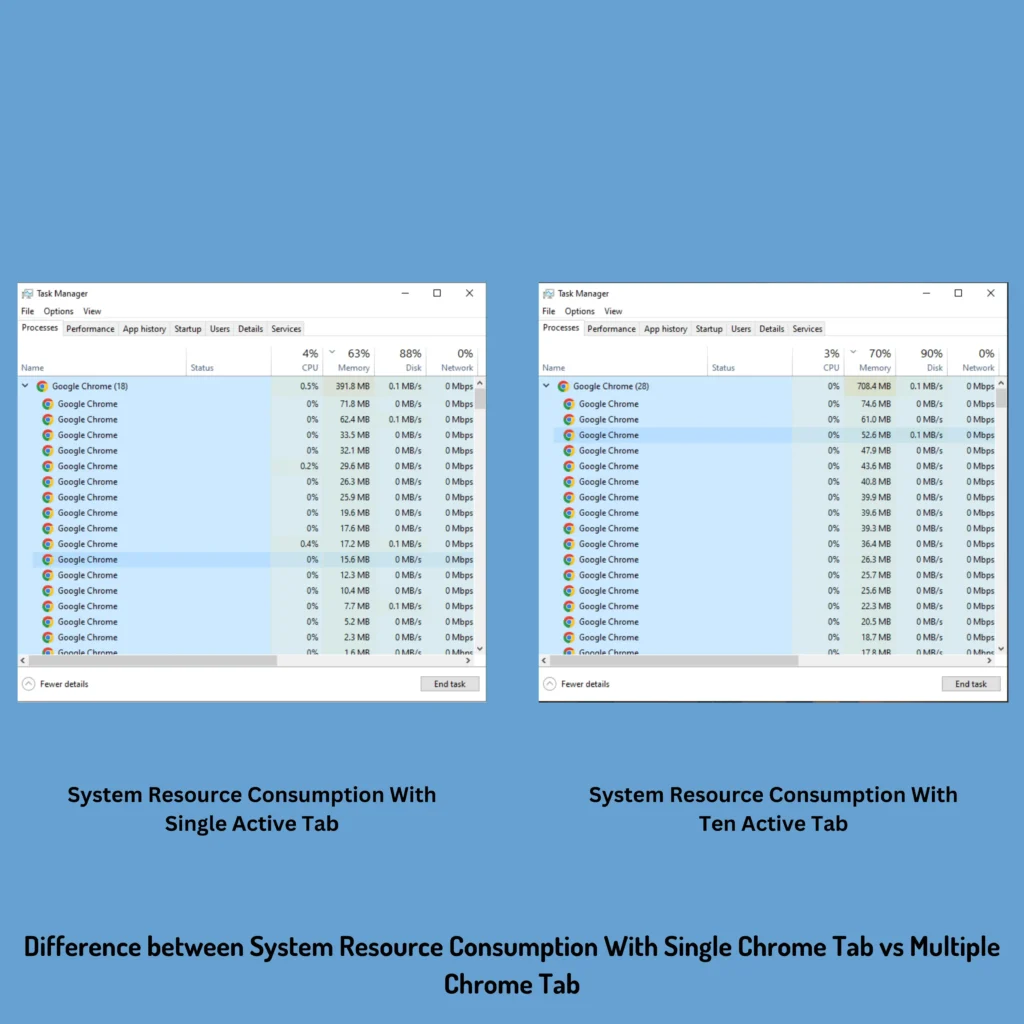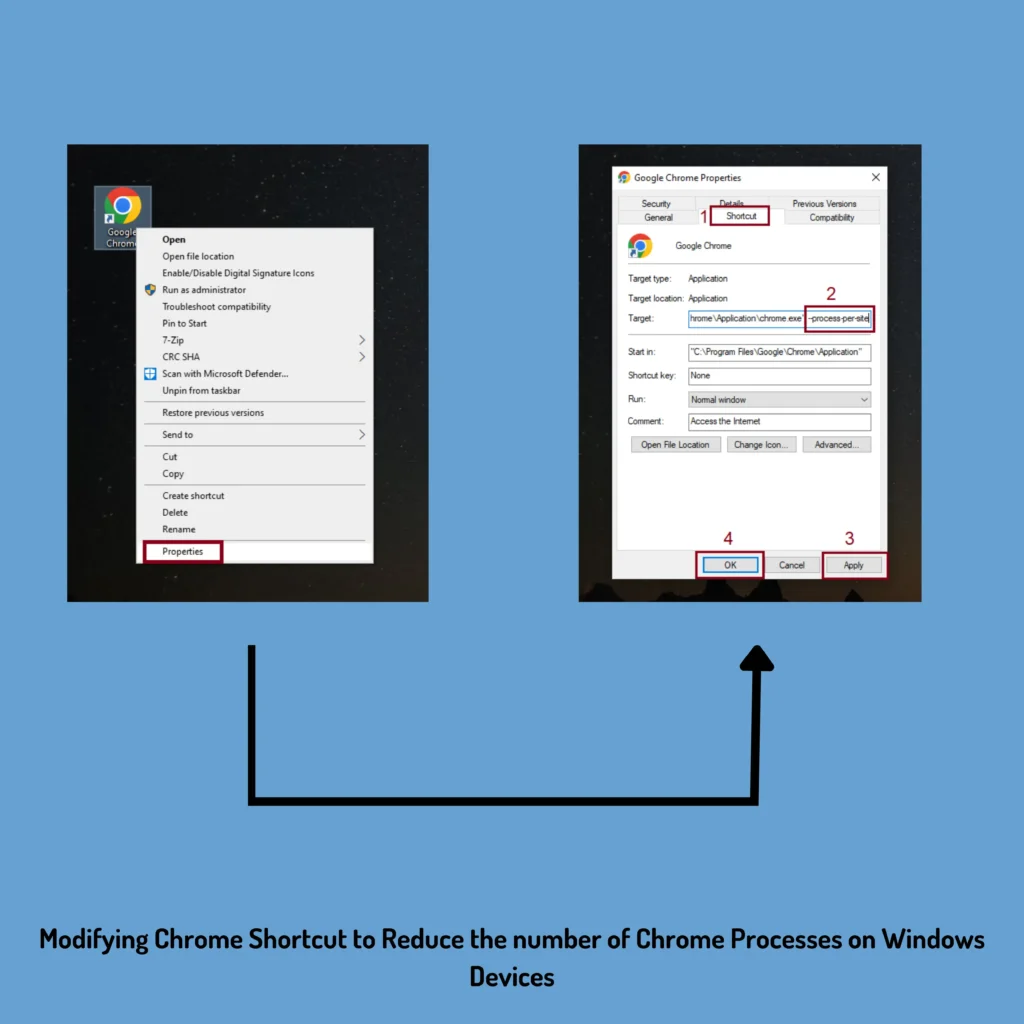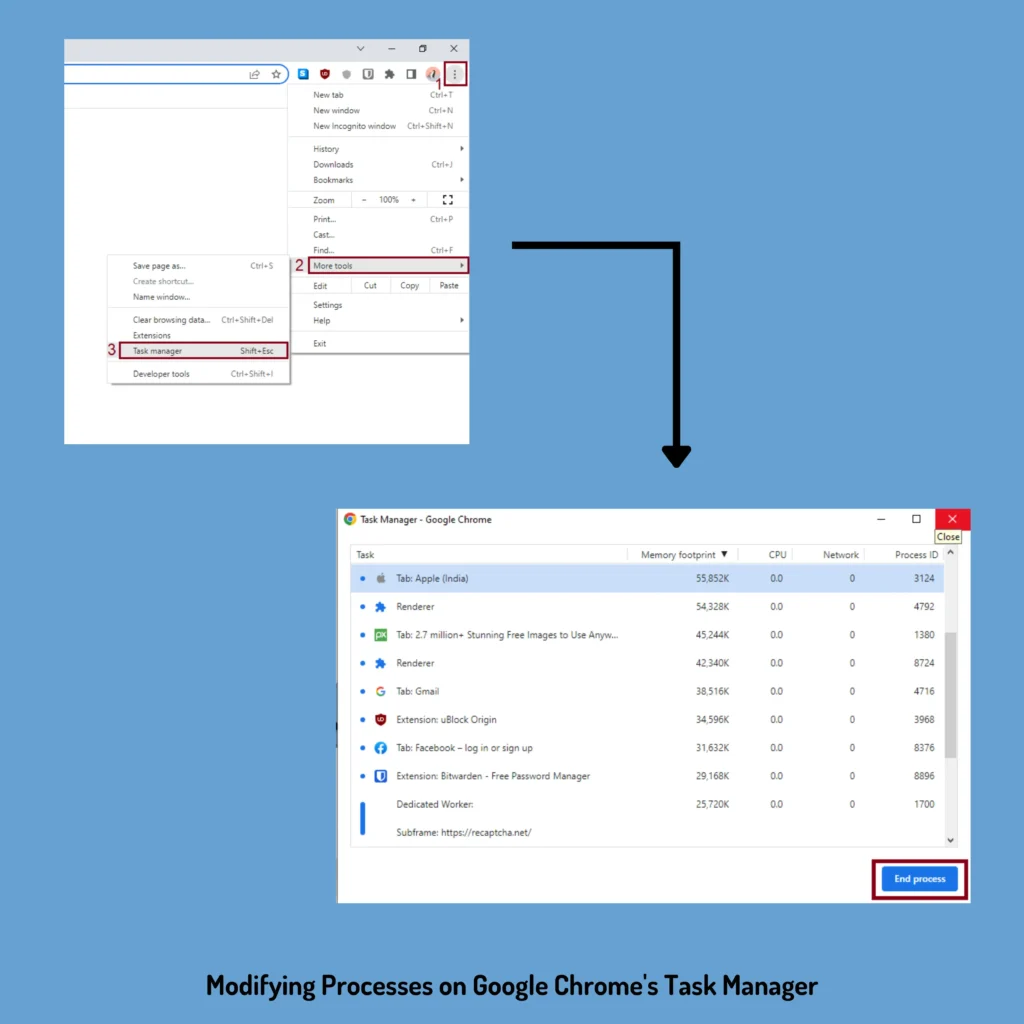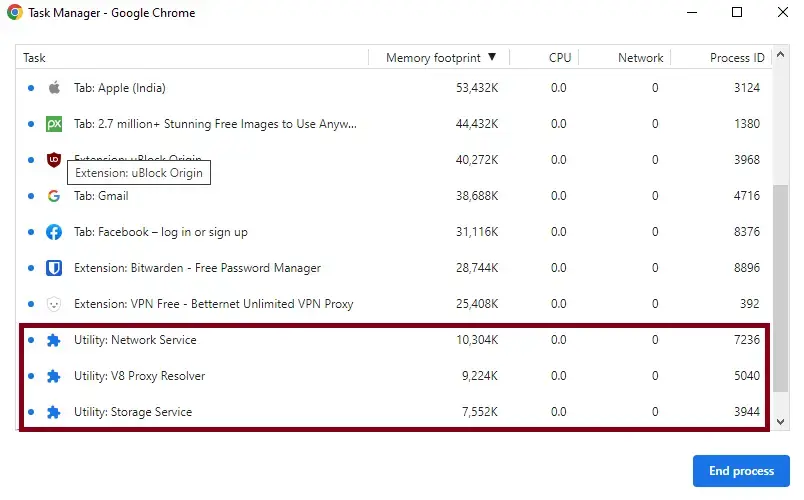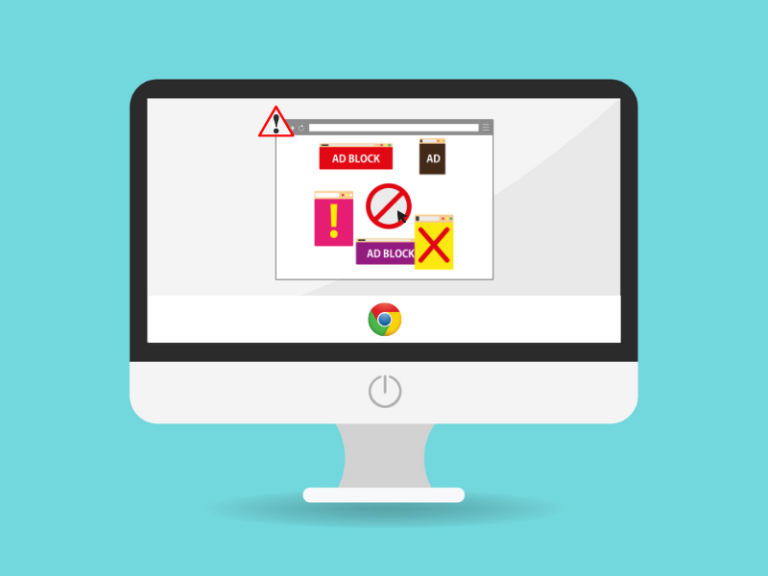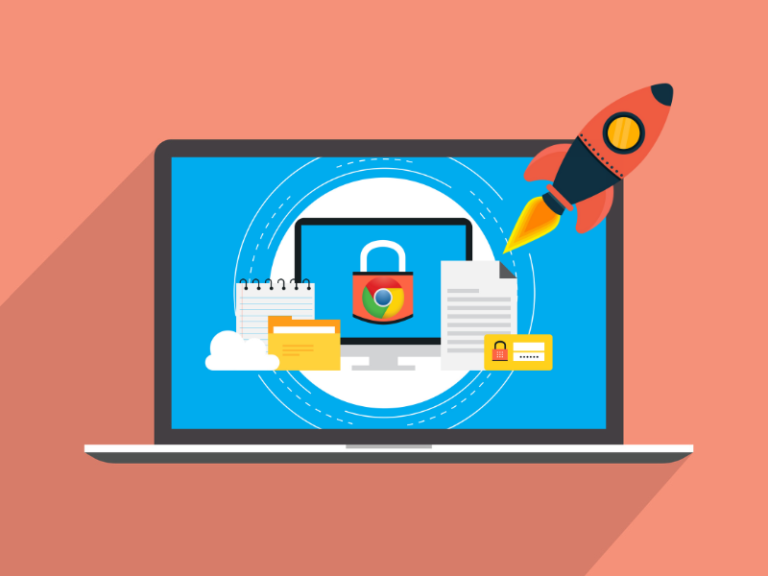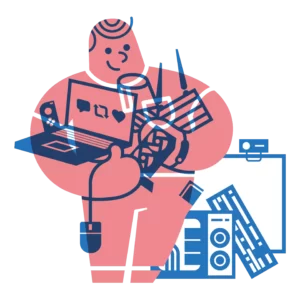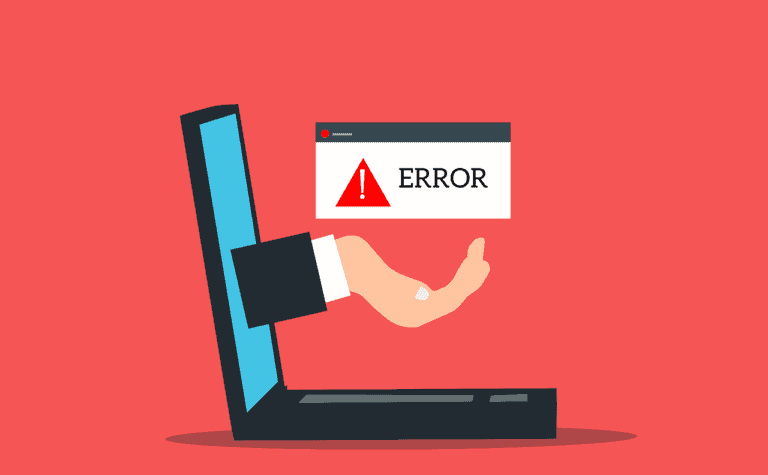Google chrome has already been the most preferable web browser for a very long time. With rich features, it has become a default Web Browser for our team as well. But when we use Google Chrome and then look into the task manager of our computer, we actually find multiple Chrome Processes there. This leads us to investigate the reason behind Google Chrome having multiple processes in task manager.
Google Chrome breaks the overall browser’s process into different entities such as Rendering, Tabs, Plugins etc. For each entity, Chrome runs a separate process. That means, the browser will create a separate instance of process for each active plugin, tab and other essential process. This is the main reason why we see multiple chrome processes in the task manager.
What are the Advantages of Having Multiple Chrome Processes?
In the first place, you may get annoyed by seeing the multiple processes in the task manager, but actually it brings some advantages for the users.
Responsiveness: Modern websites are becoming complex. As per users’ needs, developers are also coming up with more web app solutions. To work efficiently, these web apps depend heavily on the web browsers. On top of it, if the developers mess up with the code of the web apps or the websites, there is a possibility that the browser might crash.
To avoid this problem to some extent, all modern day browsers including Google Chrome split all the tabs and other processes separately. So that even if a single process becomes unresponsive and gets crashed then it won’t affect the other process. This can vastly increase the browsing experience for the users.
Security: Rendering is one of the key processes to present the web pages and web apps in front of the users. During the rendering process, web browsers need to deal with all integrated website codes. In spite of being one of the safest web browsers, there are still possibilities that even some malicious codes can slip through during Google Chrome’s rendering process.
By splitting the rendering engine’s process from the actual browser Google Chrome tries to provide another layer of protection for the users.
User Friendliness: As we have already mentioned that Google Chrome separates the process for each and every extension. This can help you to shortlist which installed add-ons or extensions are slowing down Google Chrome by consuming a high amount of system resources and you can find an alternative for them.
To know more about if extensions can slow down Google Chrome you may check our blog on “Can Extensions Slow Down Google Chrome?”.
These three are the most important benefits Google Chrome provides to its users by using its Multi Process Architecture. But every advantage also comes with some disadvantages. Let’s see what disadvantages Google Chrome brings with this Multi Process Architecture.
What are the Disadvantages of Having Multiple Chrome Processes?
Google Chrome’s Multi Process Architecture split the whole browser process in different segments and to become functional each individual segment consumes system resources separately. So the overall system resource consumption becomes much higher.
This can impact devices with lower RAM and with older CPU. If you have such a device then there is a possibility that the Google Chrome’s as well as your device’s performance become sluggish.
In such a case it will be better, switching to a memory friendly web browser. You can check our blog “Which Browser Uses the Least RAM?” to get an idea of which web browser consumes the least RAM. Or if Chrome is your favorite browser and you want to stick to it, then another blog “16 Ways to Make Google Chrome Faster” can be helpful for you.
Can You Stop Chrome from Running Multiple Processes?
You can not stop all the Google Chrome processes as it will crash the browser itself, if not then the processes will restart on its own. Merging all the Chrome Processes into a single process is also not possible. However you can certainly reduce the number of active Google Chrome Processes.
You can follow the below mentioned steps to reduce the number of active Google Chrome Processes:
1. Remove Unnecessary Chrome Extensions
There is no doubt that Chrome Extensions are very useful and increase the overall browser experience. But as we said earlier each and every Chrome Extensions and Add-ons will be considered as a separate process.
This means if you stick to the extensions that you actually need and remove the other junks then it will reduce the number of active Chrome Processes as well.
2. Use Fewer Tabs
Google Chrome will always create a separate process for the individual active tabs. So if you are that much concerned about the multiple Google Chrome Processes in the task manager then you may consider using fewer tabs at a time.
3. Modify Chrome Shortcut
Google Chrome has some unique settings that can be configured only using Google Chrome shortcut. Follow the steps below to modify Chrome’s shortcut on a Windows Device to reduce the number of active Chrome Processes:
- Right click on the desktop shortcut of Google Chrome and go to Properties. (If you do not know how to create an app shortcut on a Windows device you may check this video.)
- Go to the Shortcut Tab.
- Find the Target field and take the mouse cursor to the end of the text.
- Hit the space-bar from the keyboard and add the text “–process-per-site” without the commas.
- Click on Apply and then OK.
- Launch Google Chrome and open multiple websites and check the difference in the task manager.
4. Turn Off Google Chrome’s background Processes
By default Google Chrome apps run in the background even if the Google Chrome is not active. These processes also operate separately from the browser and the task manager will show these as individual chrome processes.
You can turn off this feature from the browser’s settings. Open Google Chrome on your desktop or laptop and go to chrome://settings/system using the address bar and toggle off “Continue running background apps when Google Chrome is closed”.
Above steps will help you to reduce the number of active Chrome Processes. However Google Chrome also has an inbuilt task manager. You can go through it and can check all the active processes then manually can stop some processes.
How to Check and Modify Which Chrome Processes are Currently Running?
When you go through Windows task manager, it will show a list of active chrome processes but you can not differentiate which processes are associated with the tabs, renderer or extensions. Because all processes will be named as Google Chrome.
To solve this issue, you need to use Google Chrome’s in-built task manager. Follow the steps below to identify and modify active Chrome Processes:
- Open Google Chrome and click on the top right three dots.
- Navigate to More Tools > Task Manager.
- Every active Google Chrome Process will be listed here. You can also check Memory Consumption, CPU Usage and other information for all the active processes.
- If you want to stop any of the processes just select the processes one by one and then click on End Process.
There are some Core Processes that you can not stop. Some of these processes include Browser, GPU Process, Utility: Network Service, utility: Storage Service, Utility: Audio Service and some others. Even if you try to kill the processes they will start automatically and if you kill the process named Browser, it’s obvious the entire browser will crash.
The Conclusion
Google Chrome’s multi-process architecture brings a number of advantages and you do not need to worry about the multiple active processes as long as you install Add-ons, extensions from authentic sources, visit authentic websites and not lack on system resources.
Inauthentic websites, add-ons or extensions may infect your browser with malwares and run unnecessary processes just to make the browser slower. We recommend watching Chrome’s Task Manager for any suspicious processes if users face any system lags.


